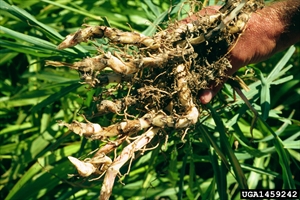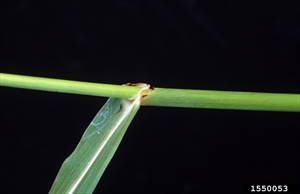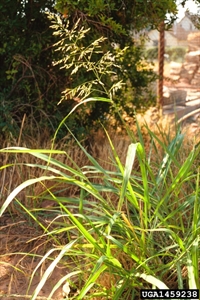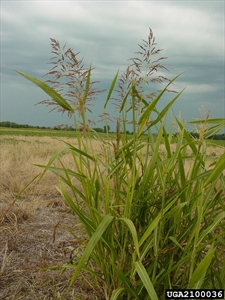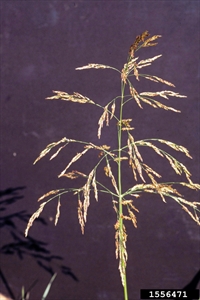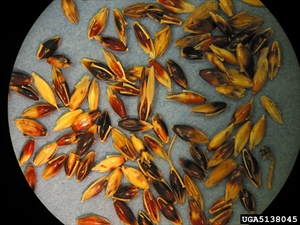- Worldwide distribution. In Australia, New Zealand, most Pacific island countries.
- Major invasive weed. Produces abundant seed. Invades many crops (e.g., cotton, maize, soybean, sugarcane), wastelands, natural vegetation, roadsides; spreads pests (midge, viruses, fungi, bacteria); toxic to livestock (especially after drought); fire risk. Allergenic pollen. Produces root chemicals inhibiting competitors.
- Numerous erect stems up to 3m, from extensive, purple-spotted scaly, rhizomes. Leaves hairless with prominent white midribs. Pale green-purplish, branched flower seedheads, up to 35cm. Spikelets (flowers) in pairs or triplets along and at end of branches.
- Spread: rhizomes and seed on the wind, water, seed lots, fodder, vehicles. Rhizomes assist survival.
- Biosecurity: check for seed in livestock fodder, maize and sorghum seeds.
- Biocontrol: none.
- Cultural control: hand-weed; plough; mow (but rhizomes regrow); heavy grazing to deplete reserve; geese; fire (follow-up with herbicide). Clean machinery/vehicles; check clothing; quarantine livestock 1 week between infested and ‘clean’ pastures. Avoid seed-infested soil, sand, gravel.
- Chemical control: in Australia, butroxydim; clethodim; glufosinate-ammonium; glyphosate; haloxyfop; imazapyr; oxyfluorfen; quizalofop-p-ethyl; trifluralin; diquat + paraquat.


